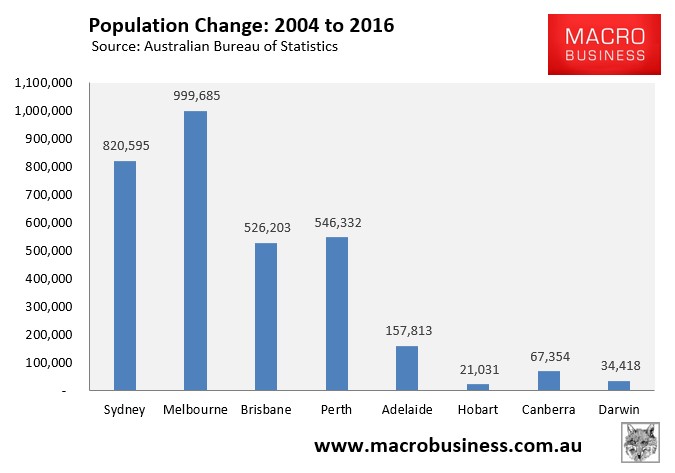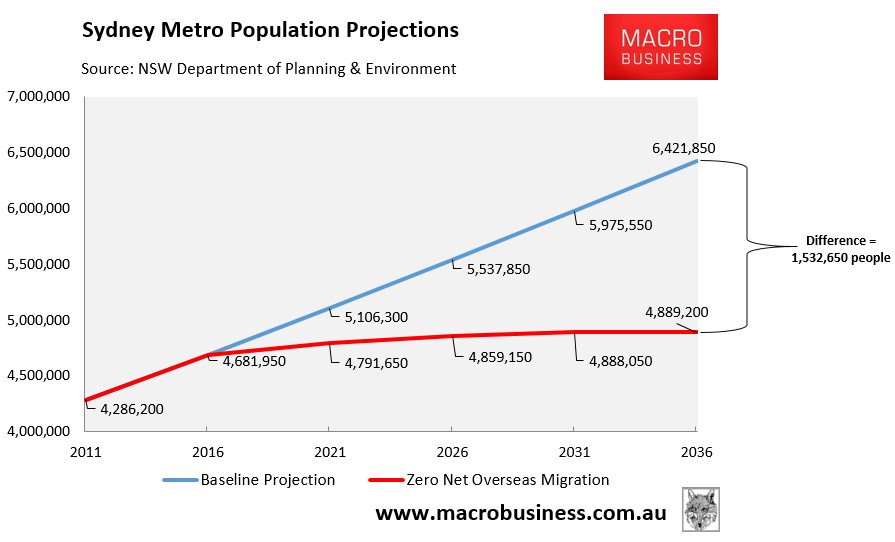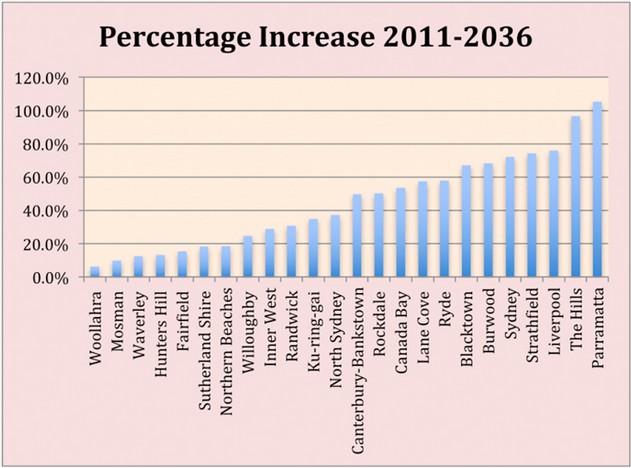The frequency of #SardineSydney stories in the mainstream media seems to be increasing as the city’s population swells way above the capacity of the road and public transport systems.
Over the past week, I recorded three separate #SardineSydney stories, which from my hazy recollection is a record.
On Thursday, News.com.au reported that Sydney workers seeking an ‘affordable’ home were being required to endure four to five hour commutes:
IT’S the everyday ordeal driving ordinary Australians to their wits end.
Four and five hour commutes on top of eight, 10 and 12 hour work days have become the standard for tens of thousands of Australians forced outside of our major cities by the housing affordability crisis.
“It’s f**ken tough, I’ll tell you that. It’s f***en a bit hard,” says Nathaneal Stephens, 25, a concreter and road worker from the Central Coast.
In order to save for a deposit on a home, he works six days a week, waking at 4:30am each morning to spend an average of three to five hours a day in the car commuting. Much of which is spent in gridlock.“It’s a major added pressure to a wellbeing or mentality. It’s added cause to depression in the long run. It’s impacting that’s for sure,” he says.
“You’re cranky, you’re crabby, you just wanna go to bed. You never have the energy to socialise properly and I think that’s the biggest impact it’s had on me: not having enough energy to be able to socialise in a happy mood or mindset,” he says…
Geoffrey Clifton, a lecturer in Transport and Logistics Management at the University of Sydney, describes the problem as “quite severe,” with Australians averaging longer commute times than even the United States.
Also on Thursday, the Daily Mail reported that Sydney commuters are being forced to park so far away from train stations they have to get an UBER back to their car after work:
Amid booming growth around areas of northwest Sydney commuters have slammed the government for poor planning with many forced to catch Uber’s to train stations with limited car parking.
While areas such as Schofield and other suburbs of Sydney’s northwest will see more than 218,000 new homes built before 2027, Transport NSW only have plans to build another 8,000 car spots, according to The Daily Telegraph.
One commuter said the risk of finding a car spot and walking to the station from the surrounding suburbs could add an extra 40 minutes onto his journey.
‘It is one of the single biggest issues for people in my area … I have seen how quick the station carparks fill up in the morning,’ Federal Labor MP Michelle Rowland told The Daily Telegraph.
MP Rowland’s seat is the inner-west suburb of Greenway where 33,000 new homes will stand tall over the next decade…
And yesterday, The SMH reported that with 330+ construction cranes going hard in Sydney, tram commuters are facing even worse over-crowding:
Commuters face a frustrating wait before they get relief from chronic overcrowding on trams on Sydney’s inner west light rail line during peak travel periods.
Passengers say the crowding is a “nightmare” during peak periods… And the most recent government statistics show the number of passengers using the light rail line surged by 59 per cent to 9.73 million in the 12 months to June last year…
The demand for light rail underscores the pressure on public transport across Sydney from a growing population. Patronage on Sydney Trains’ network has risen by 10 per cent over the past year, resulting in overcrowding at peak travel periods.
Of course, anyone with half a brain knows what is driving Sydney’s falling livability: the federal government’s mass immigration program.
It is this mass immigration program that drove the 821,000 (20%) increase in Sydney’s population in the 12 years to 2016:

And it is Australia’s mass immigration program that is primarily responsible for the 87,000 people per year projected increase in Sydney’s population to 6.4 million over the next 20-years – effectively adding another Perth to the city’s population:

You can see from the State Government’s own projections above that Sydney’s population would grow by 1.53 million fewer people over the next 20-years with zero net overseas migration. That’s the equivalent of nearly four Canberras that would not need to be built across the city, along with all the extra cars choking-up Sydney’s roads, as well as extra people cramming public transport.
Clearly, the best way to alleviate Sydney’s housing and infrastructure woes is for the State Government to tap its federal counterpart on the shoulder and demand they slash Australia’s immigration program. Because under current mass immigration settings, incumbent residents of Sydney are facing big cuts to their living standards along with expensive infrastructure bills.
Of course, elites like Lucy and Malcolm Turnbull don’t care, because the bulk of the overcrowding is not projected to occur in wealthy locations like Woollahra, but in the city’s West – home to Sydney’s working class ‘riff raff’:

It’s time Sydney’s working classes rose up against the deliberate mass immigration that is crushing ordinary workers’ wages growth, driving-up housing costs, and lowering overall livability, all for the benefit of the wealthy elite.
unconventionaleconomist@hotmail.com

